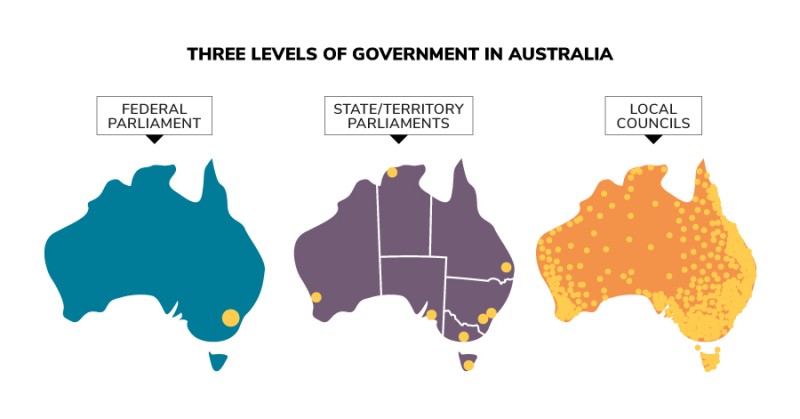Education is a 'state' issue, yet there is a federal 'Minister of Education & Training' why is that?
Thanks for your question.
Australia has three levels of government—federal, state and local—that work together to provide Australians with the services they need.
Some of the responsibilities of the federal, state/territory and local governments overlap but generally each level of government provides different services to Australians.
Education is a shared federal and state responsiblity. For example, the federal Minister for Education is responsible for areas such as childcare and university funding, international education and research. State education ministers is responsible for teacher training, school resourcing and curriculum.
For more information you can visit the federal Department of Education's website and the websites of state departments of education and compare their different areas of responsibility.
Three levels of government in Australia

Parliamentary Education Office (peo.gov.au)
Description
The three levels of government – the law-making bodies in Australia. The Federal Parliament is located in Canberra, the nation's capital. State/territory parliaments are located in the capital cities of each of the 6 states and 2 territories. Local councils are located around Australia in each local council division.
This work is licensed under a Creative Commons Attribution-NonCommercial-NoDerivs 3.0 Unported License.
You are free to share – to copy, distribute and transmit the work.
Attribution – you must attribute the work in the manner specified by the author or licensor (but not in any way that suggests that they endorse you or your use of the work).
Non-commercial – you may not use this work for commercial purposes.
No derivative works – you may not alter, transform, or build upon this work.
Waiver – any of the above conditions can be waived if you get permission from the copyright holder.
